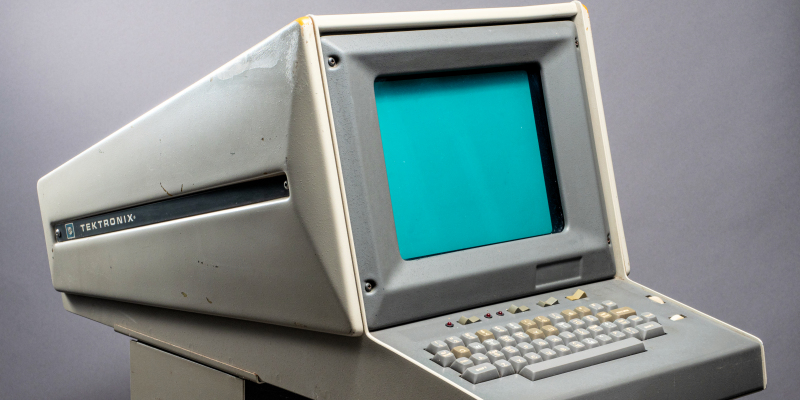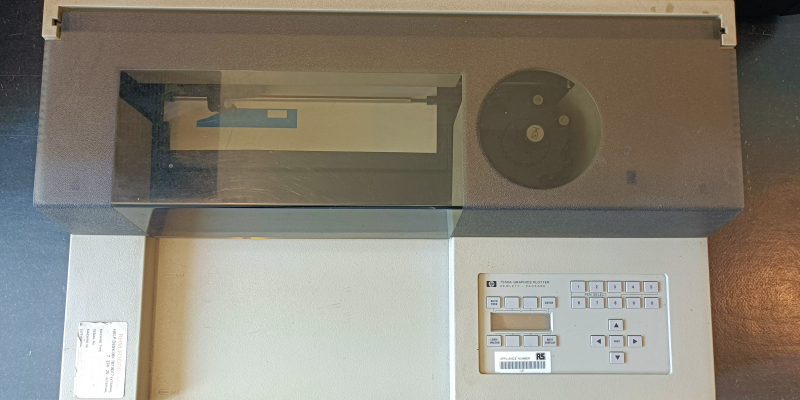
Tektronix 4010
Further details
The Tektronix 4010 series was a family of text-and-graphics computer terminals based on storage-tube technology created by Tektronix. Several members of the family were introduced during the 1970s, the best known being the 11-inch 4010 and 19-inch 4014, along with the less popular 25-inch 4016. They were widely used in the computer-aided design market in the 1970s and early 1980s.
Conventional modern video displays consist of a series of images, or frames, representing single snapshots in time. When the frames are updated rapidly enough, changes in those images provide the illusion of continuous motion. Computer displays, where the image is generally static for extended periods of time (for example, a page of text), required a stationary, more-precise, flicker-free image, as compared to television displays available at the time. A modern solution is to use additional hardware and computer memory to store the image between each update, a section of memory known as a framebuffer.
In the 1960s, memory based on core was extremely expensive, generally priced in dollars or cents per bit. Solid-state memory was even more expensive, and could only be used for a handful of high-speed working storage registers in data processing hardware.
If one wanted to store a screen of text at 80 columns by 25 lines and using 7-bit ASCII, one would require 80 x 25 x 7 bits = 14,000 bits, making the price of the terminal prohibitive. The cost would be even more if the terminal needed to display graphics.
For instance, a graphics terminal supporting 1-bit points (on/off) at 1024 by 768 resolution would require 1024 x 768 x 1 bit = 786,432 bits of memory, likely more than the cost of the computer it connected to. One solution to reduce the amount of memory required was to represent the image not as dots, but straight-line "vectors". In this case, only the endpoints have to be stored in memory, and additional hardware draws between them to produce the display. A coordinate within that same 1,024 resolution space requires 10 bits (210), so if a display can hold 1000 vectors in total, it requires 1000 vectors x 2 ends x 2 coordinates per end (X and Y) x 10 bits = 40,000 bits.
The IBM 2250 graphics terminal used this solution, and sold for £222,530 in 1970.
The 4000 series were much less expensive than earlier graphics terminals, such as the IBM 2250, because no additional electronics were needed to maintain the display on the storage-tube screen; images drawn to the screen remained there until deliberately erased. This eliminated the need for computer memory to store the images, which was extremely expensive in the 1970s.
Because the display tube itself stored the image, there was no need for any sort of auxiliary graphics memory, greatly lowering the cost of the terminal. The 4010 cost £3,140, almost two orders of magnitude less expensive than IBM's competing graphics displays. This made very complex and detailed computer graphics practical for a much wider audience. The Tektronix approach also had the advantage that there was no limit to the number of vectors that can be displayed; one could simply keep adding them to a complex image, whereas a solution like the IBM terminal had a limited number of vectors it could refresh on its display.
Early CAD systems made by companies such as Computervision took full advantage of the graphic storage capability, and were able to display arbitrarily complex designs without annoying flicker.
Plotter
In the exhibition we show a “plotter” which allows us to draw on paper the image that can be seen on a Tektronix terminal. These devices were widely used to draw maps and other very large pictures. They came from small systems as shown here to systems over a metre wide.
The pens are with the required colour then the machine is instructed by the computer to draw using the pens as we might do by hand. These types of plotters are still available today, although unusual.

